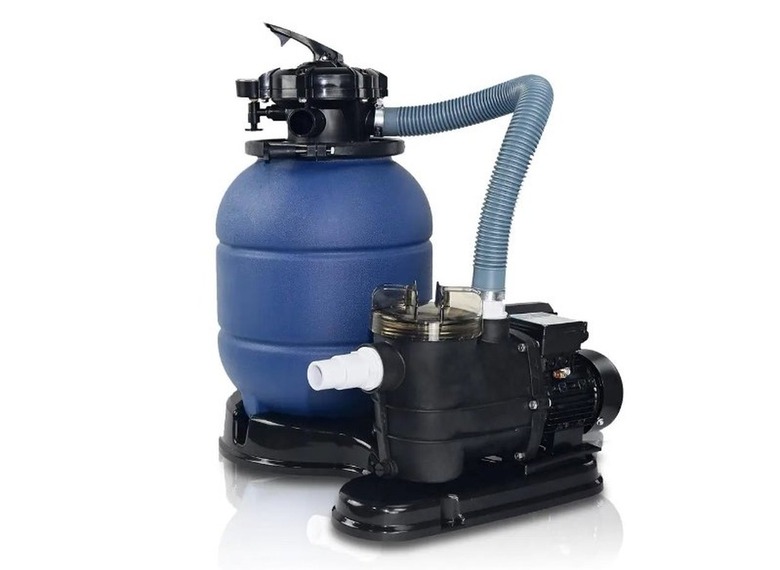How To Connect A Filter And Pump For A Swimming Pool
Whether you're opening the pool for the season or installing a new filter and pump for your swimming pool, it is helpful to understand how the system works. The basic types of filters depend on your pool, and pumps are also sized to accommodate the pool. No matter how large the pool is, the basics are all the same. Certain pipes are for returning water to the pump and filter system from the pool, while others supply water to the pool after being filtered. All systems follow a basic piping configuration.
Filter and Pump System Piping
Filter and Pump System Piping
Piping of the filter and pump system can vary. Some pipes may be simple hoses that hook up fairly easily, while others may be hard-piped with rigid PVC to the filter and pump. All pumps and filters have an in and an out. That's really all it is. Make the connections with either PVC or flexible hose. Some piping may include flexible PVC while connecting a filter and pump to a swimming pool. Others may be a little more elaborate, but there will always be an in side and an out side of any pool component. This can be marked with "in" and "out" or with directional arrows to indicate the flow.
Pool System Flow
Pool System Flow
The basic pool system flows in a certain direction and in a certain order. The pool water starts its cleaning process from the pool itself, either from a simple basket or multiple points of return directly to the pump. The pump will also have a basket that collects debris, after which the pool pump discharges the pool water to the filter. There are simple in and out connections on the pump.
Once the pool water leaves the pool pump, it travels through a discharge pipe to the filter. The discharge pipe usually has a handle that is used to send the flow of water in different directions, which is where most of the confusion starts. Pool water from the pump will flow either through the filter or be directed to bypass the filter through this component. Both of these options bring the water back to the pool, feeding the jets that circulate the water and start the process all over again.
Backwash Flexible Hose Connections
Backwash Flexible Hose Connections
There is another connection that can be confusing: the backwash connection. This cleans any loose debris or flushes dirt from the filter, helping the efficiency of the pool pump. This is usually done with sand filters, but the connection to the backwash is an important part of maintenance of the pool for the season. This collapsible hose connection needs to be routed to a safe location that will not harm the environment or cause issues with your neighbors.
Successful Pool Filter and Pump Connections
Successful Pool Filter and Pump Connections
Checking the connections before putting things together is an important part of any piping project. Many filters and pumps for a swimming pool are a PVC union that makes a seal by mechanically joining two ends of pipe together and are usually ready to fit together easily. This union has an O-ring that sits in a groove on one of the ends where the two pieces come together. Make sure that the union is present and in good condition. It is also advised to lubricate this O-ring with simple dish soap or hand soap. There are O-ring lubricants that can be safely used as well. It is not recommended to use any petroleum-based products that will make the O-ring swell or deteriorate.
Some other connections may be hose connections that will require some inspection. The inspection may be hose clamps or plug-in connections that also can have some O-rings that will need to be checked and lubricated.
Connecting a filter and pump for the swimming pool is the start to some summer poolside activities. The simple idea of "what goes in must come out" can simplify how to connect any piping to any type of pool pump and filter.
